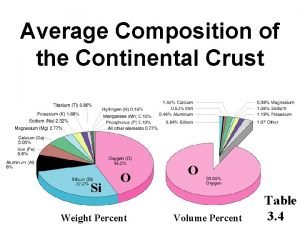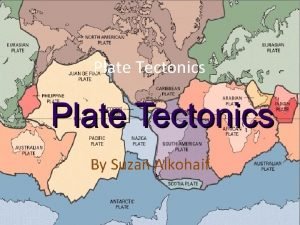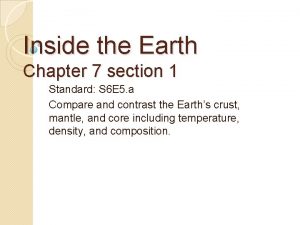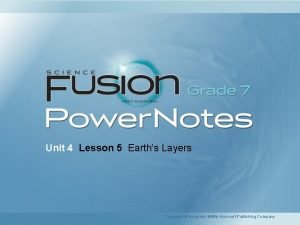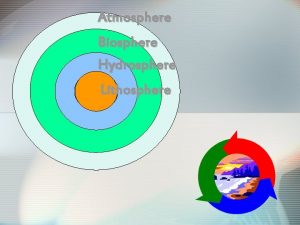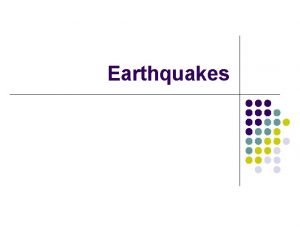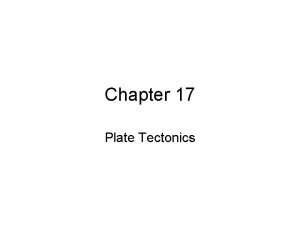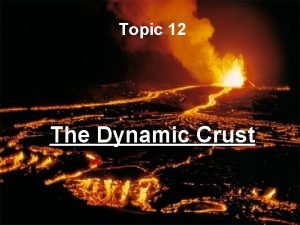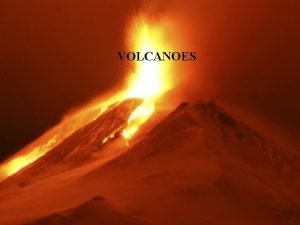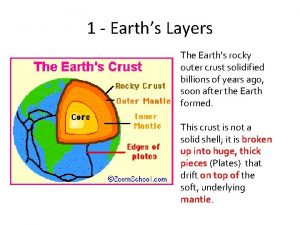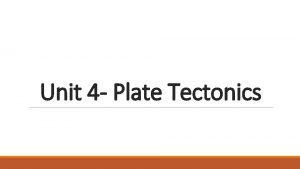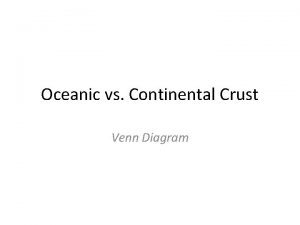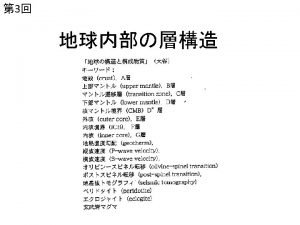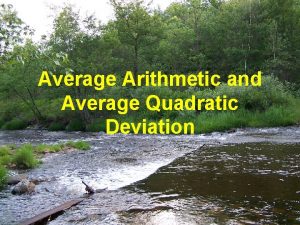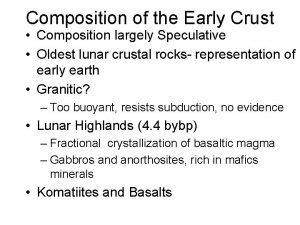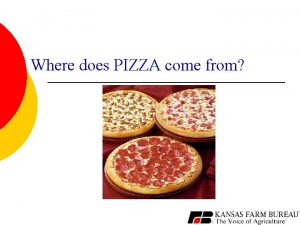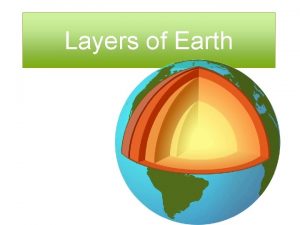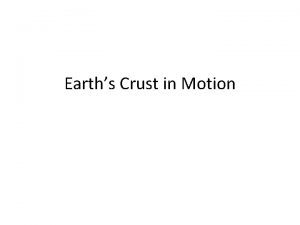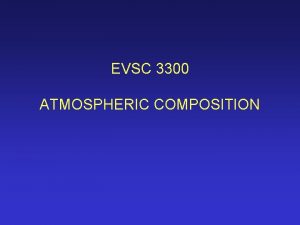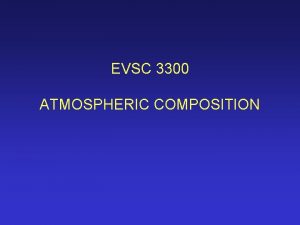Average Composition of the Continental Crust Si O





















- Slides: 21

Average Composition of the Continental Crust Si O Weight Percent O Volume Percent Table 3. 4

Olivine: formed from single silica tetrahedra


Phase – olivine ; Mg 2 Si. O 4 Components: Mg(2), Si, O(4) Can be reduced to Mg. O(2) and Si. O 2 Which is 66. 67 mole percent Mg. O and 33. 33 mole percent Si. O 2 This can be converted to weight by: . 6667 moles Mg. O X 40. 31 g/mole = 26. 875 g. 3333 moles Si. O 2 X 60. 09 g/mole = 20. 028 g 46. 903 g Giving 57. 3 weight % Mg. O and 42. 7 weight % Si. O 2

Given: 57. 3 wt. % Mg. O and 42. 7 wt. % Si. O 2 57. 3 g / 40. 31 g/mole = 1. 4215 moles Mg. O 42. 7 g / 60. 09 g/mole = 0. 7106 moles Si. O 2 1. 4215/(1. 4215 + 0. 7106) x 100 = 66. 67 mole % Mg. O 0. 7106/(1. 4215 + 0. 7106) x 100 = 33. 33 mole % Si. O 2 Or a mole ratio ( sometimes called “atomic”) of 2 Mg. O to 1 Si. O 2 The mineral formula would then be based on 4 oxygens giving Mg 2 Si. O 4, which is olivine ( specifically forsterite)

Actual analysis (wt. ) would give 34. 5 % Mg, 20. 0 % Si (with the remaining 45. 5 % assumed to be oxygen) Mg (24. 31 g/mole), Si (28. 09 g/mole) O ( 16. 00 g/mole) 34. 5 g / 24. 31 g/mole = 1. 42 moles 20. 0 g / 28. 09 g/mole = 0. 71 moles 45. 5 g / 16 g/mole = 2. 84 moles Mg 1. 42 Si 0. 71 O 2. 84 converted to 1 mole O gives Mg 0. 5 Si 0. 25 O 1 converted to whole numbers gives Mg 2 Si O 4









Classification of Igneous Rocks • Rock with 70% X, 20% Y, 10% Z • Plot mineral composition of triangle diagram Figure 2 -1 a. Method #1 for plotting a point with the components: 70% X, 20% Y, and 10% Z on triangular diagrams. An Introduction to Igneous and Metamorphic Petrology, John Winter, Prentice Hall.

Classification of Igneous Rocks • Mafic rocks: plag, pyroxene, olivine • Norite: gabbro with more opx than cpx • Top and bottom fields at 10% tick marks • Side fields at 5% tick marks (c)




G 225 – Review For Exam 1 Models of the atom Rutherford, Bohr, de. Broglie Electronic configuration Quantum numbers Periodic Table Valence electrons ; oxidationreduction Z and A numbers Isotopes ; stable and radiogenic Bonding Ionic Covalent Vander. Waals Metallic Polar versus non-polar Electronegativity Atomic structures Ionic radii – bond lengths

Coordination numbers Hexagonal and cubic closest packing Pauling’s Rules Radicals Isodesmic, anisodesmic, mesodesmic Silicate tetrahedral linkages; subclasses; polymerization Crystal Systems Mineral compositions and plotting procedures; solid solution
 Continental crust
Continental crust How thick is the continental crust
How thick is the continental crust The crust the mantle and the core
The crust the mantle and the core Continental and oceanic crust
Continental and oceanic crust Convergent transform
Convergent transform What happens at oceanic oceanic convergent boundaries
What happens at oceanic oceanic convergent boundaries Composition of the earth's crust
Composition of the earth's crust Motion in a straight line formula
Motion in a straight line formula Core crust mantle
Core crust mantle Pnitogens
Pnitogens Layers of the earth worksheet doc
Layers of the earth worksheet doc Types of crust
Types of crust Stratosfer : troposfer = crust : ….
Stratosfer : troposfer = crust : …. Movement of earth crust
Movement of earth crust Chardyson
Chardyson Types of plate boundaries
Types of plate boundaries Core mantle crust
Core mantle crust Layers of earth
Layers of earth Topic 12 earth's dynamic crust and interior
Topic 12 earth's dynamic crust and interior Volcano formation
Volcano formation Rocky crust
Rocky crust Which part of the earth is the hottest?
Which part of the earth is the hottest?
